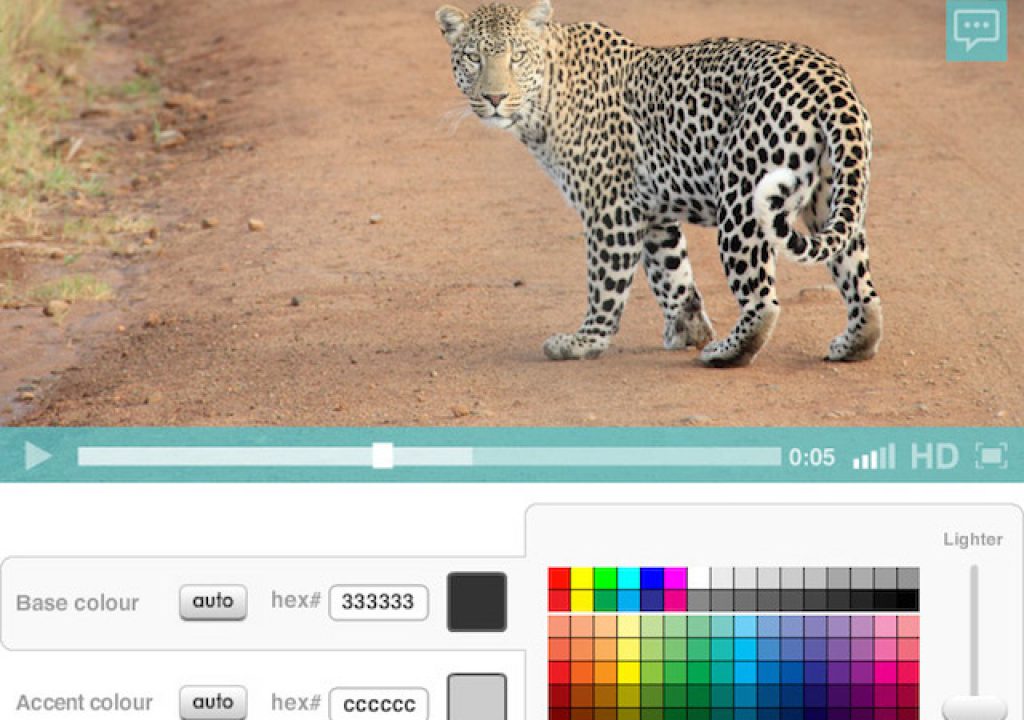Clients ask you to wear many hats. In addition to producing & editing video, you may be seen as the expert in online video distribution.
Using YouTube or Vimeo Pro to host and embed videos is a pretty safe choice. Both platforms provide great video playback and instant access to large communities that can expose your content to a broad audience. However, they may not always be the best choice for you or your clients.
Professional online video platforms have some advantages for marketers and video producers that want deep control over branding, the ability to track and engage with individual viewers, advanced analytic tools, or integration with marketing and lead generation tools.
To decide which online video platform is best for you, take stock of what you are doing and make a decision based on your own particular needs, or the needs of your client.
What follows is a discussion of the value-added features offered by the different video platforms, as well as, a brief look at some of the ones that you might want to consider.
Several of these options offer a free tier and all of them offer a free trial period, so that you can experiment and find the right fit. This isn’t meant to be an exhaustive list, just several reasonably priced platforms that are easy to use and get started with.
Video Platform Features
Reliable Playback and Fast Encoding
All of the different platforms meet the table stakes of reliable video playback that works on virtually any computer, tablet, or phone with content served through a global content delivery network (CDN).
Where you may notice a difference in performance is with the video encoding speed, or more specifically, how long your video waits before it’s encoded and ready for web playback. Vimeo and YouTube manage the costs (and the scale) of their operations by putting videos into a queue before they are processed. Even with priority encoding, a queue can build up during peak periods.
Some of the other commercially oriented products, that have higher prices, optimize their encoding systems to keep their queues at a predictably low level so that videos are processed almost immediately.
Whether the occasional 20 minute delay during encoding matters depends on your use case. Applications like adding a new how to video to your site may be less time sensitive than sending a video out to a client for review and approval.
Video Player Branding and Customization
With YouTube, your player customization options are pretty much non-existent unless you are using their developer tools. Vimeo Pro offers almost as much flexibility as the more expensive options (including the option to play video using your own player), but it’s still pretty easy to spot a page with Vimeo embeds on it.
The different commercial platforms give you more of options for player customization. Elements that can be customized typically include player colors, whether certain controls appear, which social social sharing options to use, whether the progress bar is always visible, as well things like whether the video autoplays or if playback loops once it’s complete.
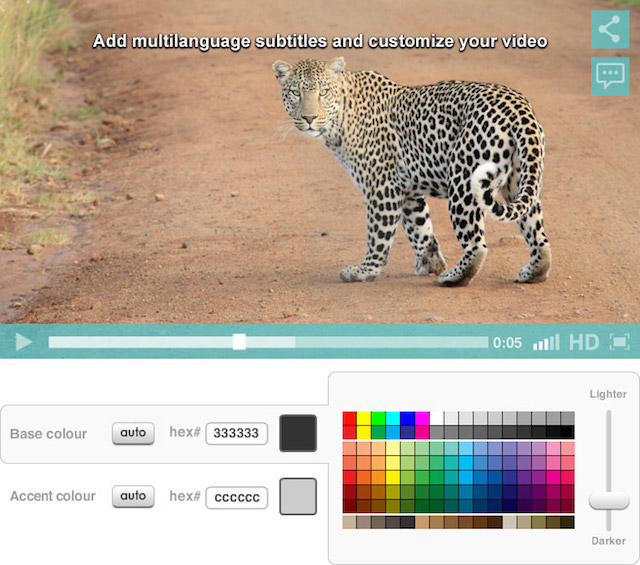
Example of Vzaar's video player branding
Platforms make it easy to customize player dimensions, set the thumbnail image that is used, and control where videos can be viewed or embedded. Finally, these platforms offer lots of flexibility when it comes to creating custom playlists that can be embedded on a site with a single line of code.
If you are working with a client like a large brand, or an agency that is very particular about how its image is conveyed, this flexibility could be important.
Customizable Video Calls to Action
When you are creating a marketing video, you should explicitly ask viewers for action. The call to action could be to purchase a product, sign up to a mailing list, or whatever else makes sense for your campaign.

Example of a call to action at the end of a video
A professional video platform can help with these calls to action. When playback finishes, the player can prompt the user to complete an action. Since you can track how many people are clicking a call to action, you can use this data to help understand the return of investment (ROI) of your video marketing campaigns.
Video Lead Capture Tools
Some of the commercial platforms can prompt viewers to enter their contact information. This can be done before they watch a video, partway through the video, or at the end of a video.
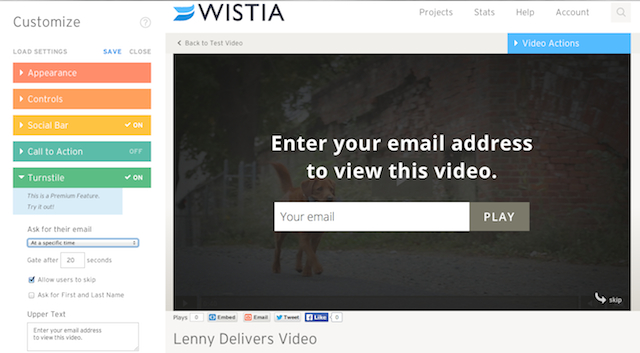
Example of Wistia's turnstile lead capture tool
For example, a great instructional video could start with a compelling teaser, and then prompt people to enter their email address into the player in order to complete viewing the video. The theory here is that if the content is valuable enough, people will provide their information in order to continue viewing.
This contact information can be fed into your mailing list or other CRM and marketing automation tools. You can then nurture your leads by reaching out to them directly, adding them to a drip marketing campaign, or whatever else makes sense to you.
Enhanced Video Viewing Analytics
Vimeo and YouTube can do a great job of providing aggregate information about how many times videos have been watched, average viewing time, where videos are being viewed from, and where videos are embedded.
For marketers and content creators, sometimes it can be helpful to dive a little deeper. Rather than looking and how many times people have watched a video, you may want to look at whether people are watching the whole thing or where they are dropping off. From here, you can put your marketing hat on to tell what is resonating with your audience, and what isn’t. Video creators can use this to hone videos that are part of a marketing campaign.
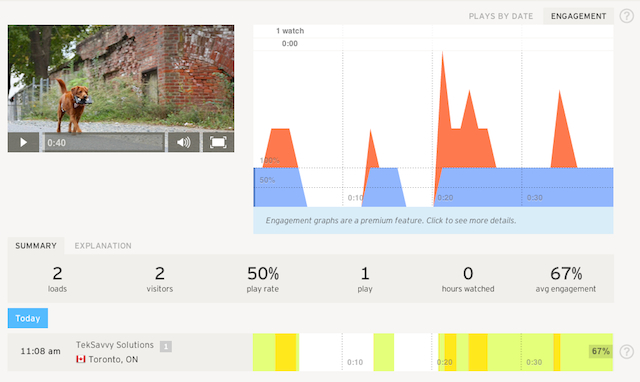
Example of Wistia's video heatmap and engagement metrics
You may also want to track how individual users are responding to a video. For example with Wistia and Vidyard, you can see how each viewer has interacted with a video. What have they rewatched, what have they skipped, etc. This can be tracked for each IP address and if a person has filled out a lead generation form or followed a link from an email marketing campaign, you can see what that actual person has done.
A primer on video analytics from Vidyard
In the hands of a marketer or salesperson, this level of visibility can be a powerful sales tool. If I can see that a prospect has viewed all of the videos on my site from beginning to end, I know that we’ll have a different conversation than I would with a prospect that has only watched a couple seconds of video.
Integration with Marketing Automation Platforms
Services like Wistia and Vidyard offer direct integration with a wide variety of CRM tools like Salesforce.com, and marketing automation platforms like Hubspot or Marketo.
The value to marketers is that they can tie lead information and video viewing information into the performance of all of their overall marketing campaign. They can see what video content is meeting their marketing objectives, and what needs work.
By centralizing all of this information, it’s easier for marketers to engage with customers and prospect in a way that’s appropriate for their level of interest and where they are in the sales funnel. Salespeople can use this information to score leads and decide where to devote their scarce resources.
Wistia and Vidyard have both put a lot of work into their integrations with different marketing tools.
Video SEO
Since video plays a prominent role in Goolge’s search algorithm it’s important to make sure that your video content is properly indexed by Google. All of the tools below can help you generate video site maps that help people find your videos. Site maps also ensure that thumbnails are presented in search results, so that your video stands out from text based content.
Customer Support
Customer support is another area where the different platforms try to distinguish themselves. Using a self-service forum can be a real pain if you have complicated needs, if you want advice, or if you are having technical problems.
Video Platforms
Wistia
Wistia is the commercial video platform that I’m most familiar with. The company has built up a loyal fanbase due to its reputation for reliable video playback and a very nice looking player that’s highly customizable. Their video heatmaps and analytics tools are very well executed, and they continue to innovate with things like their email lead generation tool (video turnstiles), and integration with marketing automation tools.
There is a free version with Wistia branding that will let you host about 40 videos. Paid plans start at $25 / month and have more capacity, enhanced analytics, lead generation tools, integration with email marketing tools. Their paid plans offer a two-week free trial.
Vidyard
Vidyard is targeted towards the needs of marketers, salespeople and corporate communications professionals. To help marketing professionals “turn viewers into customers” they have built a comprehensive analytics toolset that provides information on the behaviour of individual viewers in addition to aggregate data. Other analytic tools include A/B testing, that lets you measure whether different poster frames lead to different viewing patterns. Information from their lead generation tools, as well as, their analytic tools can be pushed directly into various marketing automation and CRM tools. In fact, Vidyard’s biggest strength appears to be these integrations.
Vidyard offers a free trial, although there is no longer pricing information on the site. Once you sign-up, they will contact you to evaluate your goals and how they can help you achieve them. Pricing is based on a combination of platform usage, the number of add-ons you need, and the number of administrators you have for the account.
Vzaar
Vzaar is another flexible video platform for video producers, small businesses and marketers. Some of the notable features include bulk uploading options, a very customizable player (including playback protocol and encoding settings), a variety of security options like password protected videos and watermarking. Marketing features include video SEO, lead generation and mail capture forms, calls to action, and integration with email marketing tools like Mailchimp.
Pricing starts at $20 per month and is tiered based on usage, advanced features (playlists, security, customization) and customer support options. The 30-day free trial provides 5GB of bandwidth and access to all of the platform features.
Sproutvideo
SproutVideo is one of the lower cost video platforms that I have seen. The feature set includes player customization, video playlists, tracking of individual engagement, aggregate analytics, calls to action, and lead generation tools. There isn’t the same level of integration with CRM and marketing automation tools that you see with Wistia and Vidyard. That said, it looks like a fine choice if you or your clients don’t need these features.
There is a 14 day free trial that includes 1GB of storage, 5GB of streaming, and all of their features. After that pricing starts at $25 per month and is tiered based on the amount of storage and bandwidth required. Individual engagement metrics are only available on the $50+ plans.
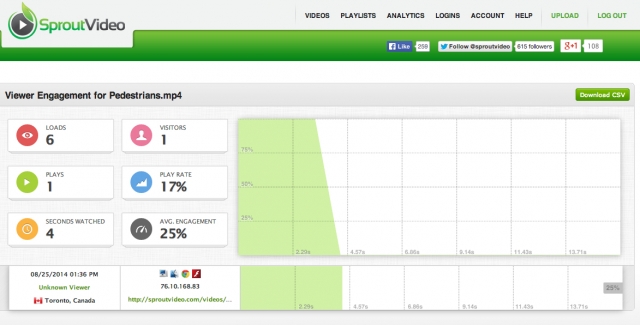

Filmtools
Filmmakers go-to destination for pre-production, production & post production equipment!
Shop Now